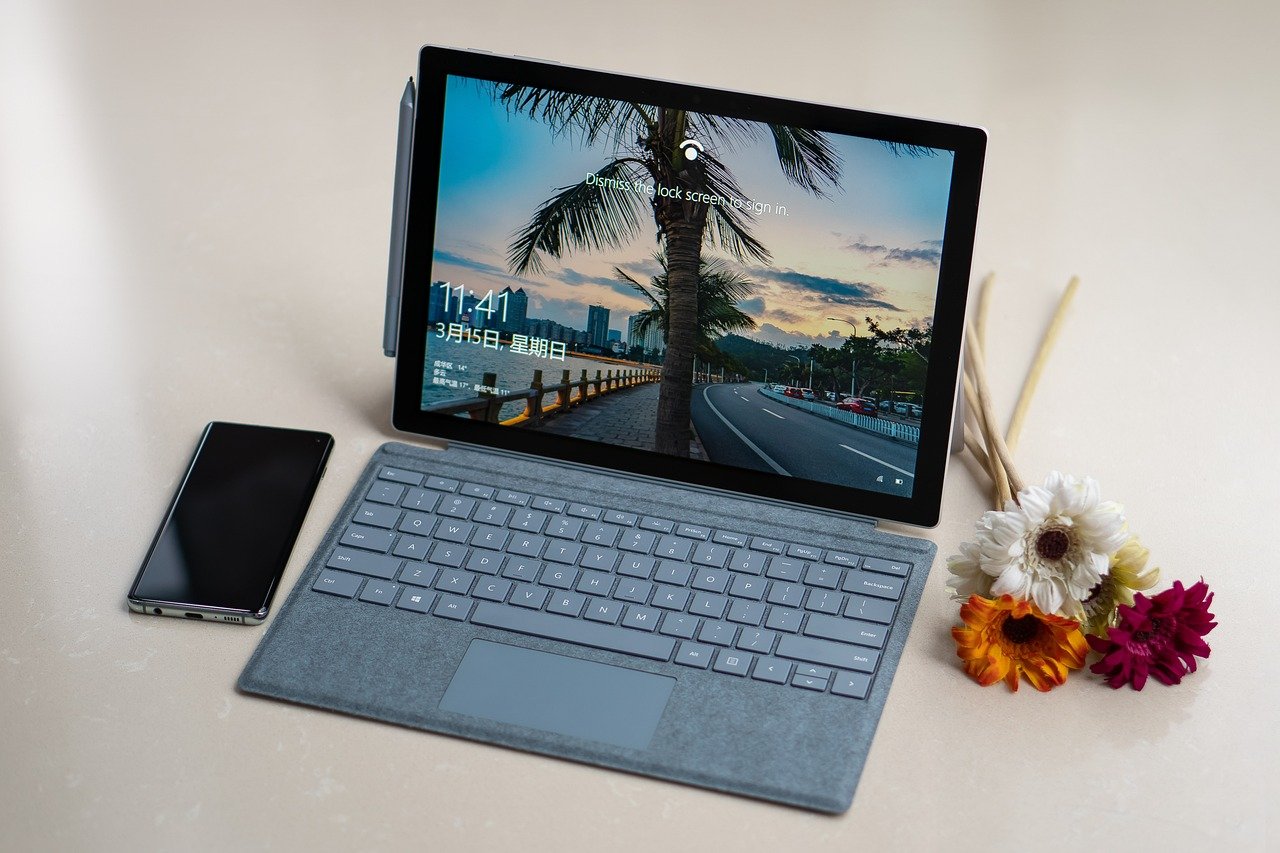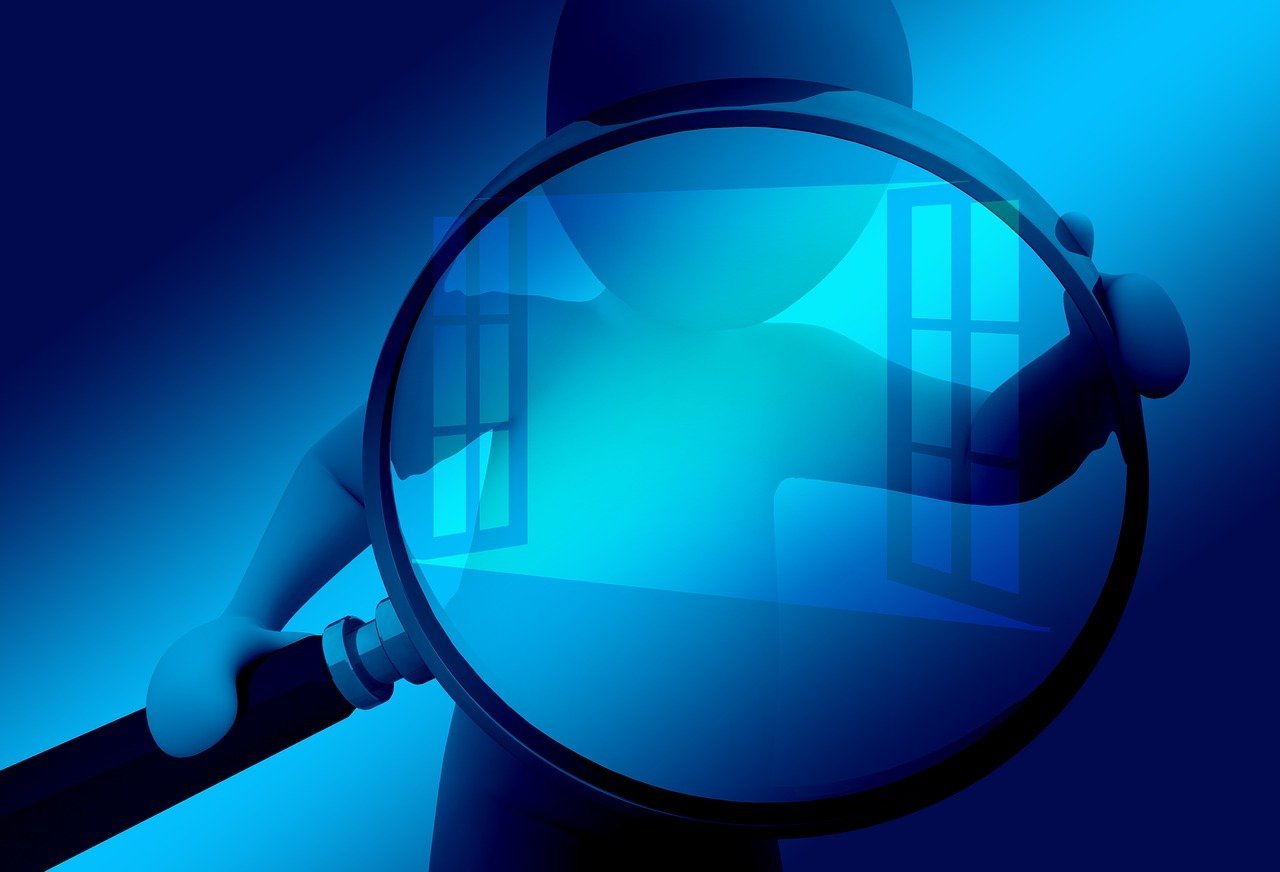Understanding and Addressing Audio Latency in Windows 10
Audio latency, in simple terms, is the time it takes for sound to travel from its source to your ears. Think of it like this: you click a button, and the sound should play immediately. If there’s a noticeable pause, that’s latency. This delay can be a real nuisance, especially when you’re trying to create music, play games, or even just watch a video. According to Wikipedia, latency is the time delay between the cause and the effect of some physical change in a system. In the digital world, this translates to the time it takes for a signal to be processed and outputted.
Windows 10, while a powerful operating system, isn’t immune to audio latency issues. Several factors can contribute to this, from outdated drivers to the way the system handles audio processing. The good news is that you can often fix these problems yourself.
What Causes Audio Delay?
Several culprits can cause audio delay on your Windows 10 system. Here’s a breakdown:
- Driver Issues: Outdated or corrupted audio drivers are a common cause. Drivers are the software that allows your hardware (sound card, Bluetooth adapter, etc.) to communicate with your operating system. If these drivers aren’t up-to-date or are damaged, you’ll likely experience problems.
- Hardware Acceleration: Windows 10 uses hardware acceleration to improve audio performance. However, sometimes this feature can introduce latency, especially if your hardware isn’t fully compatible.
- Bluetooth Interference: If you’re using Bluetooth audio devices, interference from other devices (Wi-Fi routers, microwaves, etc.) can disrupt the signal and cause delays.
- Incorrect Audio Settings: Certain audio settings, such as audio enhancements or exclusive mode, can sometimes lead to latency.
- Streaming Service Issues: When watching videos online, the streaming service itself might be the problem. A slow internet connection or issues with the service’s servers can cause audio and video to fall out of sync.
Step-by-Step Guide to Fixing Audio Delay
Let’s get down to the nitty-gritty of fixing audio delay. Here’s a step-by-step guide, incorporating my own experiences and insights:
- Restart Your Computer: This might sound basic, but it’s often the first and easiest solution. Restarting your computer clears the system’s memory and can resolve temporary glitches that might be causing the delay. I’ve lost count of the times a simple restart has fixed a frustrating tech issue!
-
Run the Playing Audio Troubleshooter: Windows 10 has built-in troubleshooters that can automatically detect and fix common audio problems.
- Go to Settings (you can find this by clicking the Start button and then the gear icon).
- Click on Update & Security.
- Select Troubleshoot from the left-hand menu.
- Click on Playing Audio and then Run the troubleshooter.
- Follow the on-screen instructions. The troubleshooter will try to identify and fix any audio issues.
-
Check Speaker Properties: Incorrect speaker settings can cause audio lag.
- Open the Control Panel. You can search for it in the Start menu.
- In the Control Panel, change the View by option to either Small icons or Large icons.
- Click on Sound.
- Select the audio output device you’re using (speakers, headphones, etc.) and click Properties.
- Go to the Advanced tab.
- Under Default Format, try selecting 16 bit, 48000 Hz (DVD Quality). Experiment with other options if this doesn’t work.
- In the same window, go to the Enhancements tab and check the box next to Disable all sound effects.
- Click Apply and then OK. Restart your computer.
-
Update Your Audio Drivers: This is a crucial step. Outdated drivers are a common cause of audio problems.
- Right-click the Start button and select Device Manager.
- Expand the Sound, video and game controllers section.
- Right-click on your audio device (e.g., Realtek High Definition Audio) and select Update driver.
- Choose Search automatically for updated driver software. Windows will search for and install the latest drivers.
- If Windows can’t find an update, go to the manufacturer’s website (Realtek, for example) and download the latest drivers for your specific sound card model.
-
Disable Hardware Acceleration (If Applicable): As mentioned earlier, hardware acceleration can sometimes cause problems. The location of this setting varies depending on the application you’re using.
-
For Google Chrome: Type
chrome://settings/systemin the address bar and toggle off Use hardware acceleration when available. -
For Mozilla Firefox: Type
about:preferencesin the address bar, scroll down to Performance, and uncheck Use recommended performance settings and Use hardware acceleration when available. -
For Microsoft Edge: Type
edge://settings/systemin the address bar and toggle off Use hardware acceleration when available.
-
For Google Chrome: Type
Common Mistakes to Avoid:
- Installing the Wrong Drivers: Always download drivers from the official manufacturer’s website. Installing drivers for the wrong model can cause more problems.
- Ignoring Bluetooth Interference: If you’re using Bluetooth, don’t overlook the possibility of interference. Keep your devices close together and away from other electronic devices.
- Not Restarting After Changes: Many changes, especially driver updates, require a restart to take effect.
Additional Tips:
- Close Unnecessary Programs: Close any programs that are using a lot of system resources, as this can impact audio performance.
- Check Your Internet Connection: If you’re experiencing audio delay while streaming, make sure you have a stable and fast internet connection.
- Try a Different Media Player: If the problem is only happening with a specific media player, try using a different one to see if that resolves the issue.
Expected Outcomes:
By following these steps, you should be able to significantly reduce or eliminate audio delay on your Windows 10 system. You should experience a more responsive and enjoyable audio experience, whether you’re listening to music, watching videos, or playing games.
Troubleshooting Bluetooth Audio Delay on Windows 10
Bluetooth audio has become a staple for many of us, offering the convenience of wireless listening. However, the wireless nature of Bluetooth can sometimes lead to audio delay, also known as latency. This can be especially frustrating when watching videos or playing games.
According to Wikipedia, Bluetooth is a wireless technology standard for exchanging data over short distances. While convenient, the technology has inherent limitations that can contribute to audio delay.
Understanding Bluetooth Audio Delay
Bluetooth audio delay is the time it takes for the audio signal to travel from your computer to your Bluetooth device (headphones, speakers, etc.). This delay can manifest as a noticeable lag between the video and audio, or as a general sluggishness in the sound.
Causes of Bluetooth Audio Delay:
- Bluetooth Driver Issues: Outdated or corrupted Bluetooth drivers are a primary culprit.
- Interference: Bluetooth operates on the 2.4 GHz frequency, which is also used by Wi-Fi routers, microwaves, and other devices. This can cause interference and lead to delays.
- Distance: The distance between your computer and your Bluetooth device can affect the signal strength and introduce latency.
- Codec Support: Bluetooth devices use codecs (compression/decompression algorithms) to transmit audio. If your device doesn’t support the best codecs (like aptX), you might experience delays.
- Power Saving Modes: Some Bluetooth devices have power-saving modes that can introduce latency.
Step-by-Step Solutions for Bluetooth Audio Delay

Here’s a detailed guide to fixing Bluetooth audio delay on your Windows 10 system:
-
Ensure Basic Requirements: Before diving into more complex solutions, make sure the basics are covered.
- Make sure your Bluetooth device is compatible with your Windows PC.
- Verify that Bluetooth is turned on and functioning correctly on both your computer and your Bluetooth device.
- Ensure your Bluetooth device is correctly paired with your computer.
- Check the battery levels of your Bluetooth device; low battery can cause performance issues.
- Make sure there are no physical obstructions (walls, furniture) between your PC and the Bluetooth device.
- Ensure your Windows and Bluetooth device firmware are up-to-date.
- Move Closer to Your Computer: Bluetooth has a limited range. Moving closer to your computer can improve the signal strength and reduce delay. I’ve found that even a few feet can make a difference.
-
Reconnect Your Bluetooth Device: Re-establishing the Bluetooth connection can often resolve temporary glitches.
- Go to Settings > Devices > Bluetooth & other devices.
- Find your Bluetooth audio device in the list and click Remove device.
- Restart both your computer and your Bluetooth device.
- Re-pair the device with your computer.
- Run the Windows Audio Playback Troubleshooter: This built-in tool can automatically detect and fix common audio problems. (See the steps in the previous section).
-
Update Your Bluetooth Driver: Outdated drivers are a common cause of Bluetooth issues.
- Open Device Manager (right-click the Start button and select it).
- Expand the Bluetooth category.
- Right-click on your Bluetooth adapter and select Update driver.
- Choose Search automatically for updated driver software.
- If Windows doesn’t find an update, check the website of your computer or Bluetooth adapter manufacturer for the latest drivers.
-
Restart the Windows Audio Service: Restarting the Windows Audio service can often resolve audio issues.
-
Press Windows key + R, type
services.msc, and press Enter. - Scroll down to find the Windows Audio service.
- Right-click and select Restart.
- Repeat this for the Windows Audio Endpoint Builder service.
-
Press Windows key + R, type
-
Disable Audio Enhancements: Audio enhancements can sometimes introduce latency.
- Right-click the speaker icon in the taskbar and select Open Sound settings.
- Click Device properties under the output section.
- Click on the Additional device properties link.
- Go to the Enhancements tab.
- Check the box next to Disable all sound effects.
- Click Apply and then OK.
-
Remove Other Device Interference: Minimize interference from other devices.
- Move away from or turn off other wireless devices (Wi-Fi routers, microwaves, etc.).
- If possible, switch your Wi-Fi to the 5 GHz band, which is less prone to interference.
-
Check for Hardware Issues: If the problem persists, there might be a hardware issue.
- Try your Bluetooth audio device with another computer or smartphone to see if the delay occurs there. If it does, the problem is likely with the device itself.
- If possible, test a different Bluetooth audio device with your computer to see if the problem is with your computer’s Bluetooth adapter.
- Consider using a USB Bluetooth adapter if your computer’s built-in adapter is faulty.
-
Check File and Format Compatibility: Ensure the audio file format is compatible.
- Try playing different audio file formats (MP3, WAV, FLAC) to see if the delay persists.
- Adjust the audio quality settings in your media player or streaming service.
- Check if your Bluetooth device supports the audio codec being used.
Common Mistakes to Avoid:
- Not Checking Battery Levels: A low battery on your Bluetooth device can cause performance issues.
- Ignoring Interference: Don’t underestimate the impact of interference from other devices.
- Not Updating Firmware: Make sure the firmware on both your Bluetooth device and your computer’s Bluetooth adapter is up-to-date.
Additional Tips:
- Use a Bluetooth Adapter with aptX Support: If your Bluetooth device supports aptX, make sure your computer’s Bluetooth adapter also supports it. aptX is a higher-quality codec that can reduce latency.
- Disable Power Saving Modes: Check the settings of your Bluetooth device and your computer to disable any power-saving modes that might be introducing latency.
Expected Outcomes:
By following these steps, you should be able to significantly reduce or eliminate Bluetooth audio delay on your Windows 10 system. You should experience a more seamless and enjoyable audio experience.
Advanced Techniques for Minimizing Audio Latency in Windows 10
While the previous sections covered the most common fixes, sometimes you need to dig a little deeper to optimize your audio performance. These advanced techniques can help you further reduce latency and improve the overall audio experience on your Windows 10 system.
According to Wikipedia, audio latency is the delay between the time an audio signal is generated and the time it is heard. Reducing this latency is crucial for real-time applications like music production and gaming.
Using REAL (Reduce Audio Latency)
REAL is a third-party application designed to reduce audio latency on Windows 10. It works by requesting smaller buffer sizes from the audio engine, which can lead to a more responsive audio experience.
How REAL Works:
As described in Microsoft’s Low Latency Audio FAQ section, by default, all applications in Windows 10 use 10ms buffers to render audio. However, if one application requests the usage of small buffers, then the Audio Engine will start transferring audio using that particular buffer size. In that case, all applications that use the same endpoint (device) and mode (either exclusive or shared) will automatically switch to that small buffer size. REAL makes use of this Audio Engine property by starting a rendering stream which requests the minimal buffer size that is supported by the audio driver.
Steps to Use REAL:
-
Install the In-Box HDAudio Driver (Optional): This step might improve latency.
- Open Device Manager (right-click the Start button and select it).
- Expand Sound, video, and game controllers.
- Double-click on the device that corresponds to your speakers.
- Go to the Driver tab.
- Select Update driver > Browse my computer for driver software > Let me pick from a list of available drivers on my computer.
- Select High Definition Audio Device and click Next.
- If a warning appears, click Yes.
- Select Close.
- If asked to reboot, select Yes.
- Download REAL: Get the latest version from a trusted source.
-
Launch REAL: Run the
REAL.exefile. The latency reduction is active as long as the application is running.
Command-Line Options:
-
--tray: Launches the application minimized to the system tray.
Downsides of REAL:
Since the application reduces audio sample buffer size, the buffer runs out faster and needs to be refilled more frequently. This increases the odds of audible audio cracks appearing when the CPU is busy and unable to keep up.
Optimizing Power Settings
Power settings can affect audio performance, especially on laptops.
-
Change Power Plan:
- Right-click the battery icon in the taskbar and select Power Options.
- Select the High performance power plan. If you don’t see it, click Show additional plans.
-
Disable Battery Saver Mode:
- Go to Settings > System > Battery.
- Turn off the toggle under Battery saver.
-
Change Minimum Processor State Percentage:
- Open Control Panel.
- Go to Hardware and Sound > Power Options.
- Click Change plan settings > Change advanced power settings.
- Navigate to Processor power management > Minimum processor state.
- Set a higher percentage for On battery or Plugged in, depending on your usage.
- Click Apply and OK.
Important Note: Increasing the minimum processor state can lead to increased heat and reduced battery life.
Checking for Codec Incompatibilities

Codec incompatibility can trigger audio delay. You need to change the video/audio codec to make it compatible or trim off the broken segment to fix the audio sync error.
For various audio/video playback error on Windows 10, you can try WinX HD Video Converter Deluxe – a 100% safe and reliable software that will repair common problems with video and audio, convert any media file to MP4 H.264/HEVC that is more compatible with your Windows 10, and cut off the broken part before playing your local file.
Using ASIO Drivers (For Music Production)

If you’re a musician or audio professional, you might consider using ASIO (Audio Stream Input/Output) drivers. ASIO drivers bypass the Windows audio stack, providing lower latency and more direct access to your audio hardware.
How to Use ASIO Drivers:
- Install an ASIO Driver: Download and install an ASIO driver for your audio interface. Many audio interfaces come with their own ASIO drivers.
- Configure Your DAW: In your Digital Audio Workstation (DAW) software, select the ASIO driver as your audio device.
- Adjust Buffer Size: Experiment with the buffer size settings in your DAW. Smaller buffer sizes result in lower latency but can also increase the risk of audio dropouts if your system can’t keep up.
Common Mistakes to Avoid:
- Using the Wrong ASIO Driver: Make sure you install the correct ASIO driver for your audio interface.
- Setting the Buffer Size Too Low: If you set the buffer size too low, you might experience audio dropouts or glitches.
Additional Tips:
- Optimize Your System: Close unnecessary programs and disable any power-saving features to improve ASIO performance.
- Use a Dedicated Audio Interface: For the best results, use a dedicated audio interface with its own ASIO driver.
Expected Outcomes:
By implementing these advanced techniques, you can further reduce audio latency and optimize your audio experience. This is especially beneficial for music production, gaming, and other applications where low latency is critical.
Troubleshooting Audio and Video Synchronization Issues in Windows 10
Experiencing audio and video out of sync is a common frustration when watching videos or streaming content on Windows 10. This can make it difficult to enjoy your favorite movies, shows, or online content.
According to Wikipedia, audio-video synchronization (AV sync) is the degree to which the audio and video components of a multimedia presentation are aligned in time. When the audio and video are not synchronized, it can significantly detract from the viewing experience.
Identifying the Causes of Audio/Video Sync Problems
Several factors can cause audio and video to fall out of sync. Here are some of the most common culprits:
- Streaming Service Issues: Problems with the streaming service itself, such as server issues or network congestion, can lead to synchronization problems.
- Internet Connection: A slow or unstable internet connection can cause buffering and synchronization issues.
- Browser Issues: Your web browser might have problems with the video playback, especially if the cache is full or hardware acceleration is enabled.
- Audio and Video Device Drivers: Outdated or corrupted drivers for your audio and video devices can cause synchronization problems.
- Hardware Acceleration: While hardware acceleration is designed to improve performance, it can sometimes cause issues with audio and video sync.
- Codec Issues: Codec incompatibility can trigger audio delay while playing. Consequently, the media player cannot correctly read the file information or calculate the time length of the damaged portion.
Step-by-Step Solutions for Audio/Video Sync Problems

Here’s a step-by-step guide to resolving audio and video synchronization issues on your Windows 10 system:
-
Try Easy Solutions First: Before diving into more complex fixes, try these simple steps:
- Restart Your Computer: This can often resolve temporary glitches.
- Restart the Application: Close the media player or browser and relaunch it.
- Check System Resources: Make sure you don’t have too many applications running simultaneously, as this can impact performance. Open Task Manager (Ctrl + Shift + Esc) and check CPU usage.
- Run the Audio Troubleshooter: Windows 10 has a built-in troubleshooter that can automatically detect and fix audio problems. (See the steps in the previous sections).
- Check Speaker Properties: Incorrect speaker settings can cause audio lag. (See the steps in the previous sections).
-
Restore Default Settings for Playback Devices: If the above solutions don’t work, try restoring the playback device settings to their defaults.
- Go to Speaker Properties (see the steps in the previous sections).
- Open the Advanced tab.
- Click the Restore Defaults button.
- Restart your computer.
- Update Audio and Video Drivers: Outdated drivers are a common cause of sync problems. (See the steps in the previous sections).
-
Change Your Power Plan: The power plan can affect performance.
- Right-click the battery icon in the taskbar and select Power Options.
- Select the High performance power plan.
- Change Minimum Processor State Percentage: (See the steps in the previous sections).
- Check Your Internet Connection: If the problem occurs when watching online content, test your internet speed to ensure you have a fast and stable connection.
- Use Another Browser: Try using a different web browser to see if the problem persists.
- Disable Hardware Acceleration: Hardware acceleration can sometimes cause sync issues. (See the steps in the previous sections).
- Change video/audio codec to make it compatible with media player: Codec incompatibility and damaged file can trigger audio delay while playing. Consequently, the media player cannot correctly read the file information or calculate the time length of the damaged portion. You need to change the video/audio codec to make it compatible or trim off the broken segment to fix the audio sync error.
Common Mistakes to Avoid:
- Not Checking Your Internet Connection: If you’re streaming, a slow internet connection is a common cause of sync problems.
- Ignoring Driver Updates: Outdated drivers are a frequent culprit.
- Not Restarting After Changes: Many changes require a restart to take effect.
Additional Tips:
- Clear Browser Cache: A full browser cache can sometimes cause problems. Clear your browser’s cache and cookies.
- Try a Different Video File: If the problem only occurs with a specific video file, the file might be corrupted or have codec issues.
- Update Your Media Player: Make sure your media player is up-to-date.
Expected Outcomes:
By following these steps, you should be able to resolve audio and video synchronization issues on your Windows 10 system, resulting in a more enjoyable viewing experience.
Frequently Asked Questions (FAQ)

Here are some frequently asked questions about fixing audio delay in Windows 10:
-
Why is my audio delayed on Windows 10?
Audio delay can be caused by outdated drivers, Bluetooth interference, incorrect audio settings, hardware acceleration issues, or problems with the streaming service or media player.
-
How do I update my audio drivers?
You can update your audio drivers through Device Manager. Right-click the Start button, select Device Manager, expand “Sound, video and game controllers,” right-click your audio device, and select “Update driver.”
-
How do I fix Bluetooth audio delay?
Try moving closer to your computer, reconnecting your Bluetooth device, running the Windows Audio Troubleshooter, updating your Bluetooth driver, restarting the Windows Audio service, disabling audio enhancements, and removing other device interference.
-
How can I reduce audio latency for music production?
Use ASIO drivers with a dedicated audio interface, and experiment with buffer size settings in your DAW.
-
What should I do if the audio and video are out of sync when watching online?
Check your internet connection, try a different browser, disable hardware acceleration, and update your audio and video drivers.
